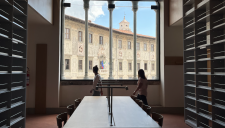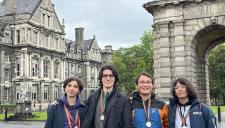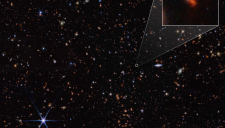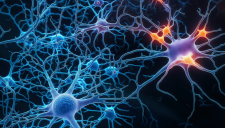For the first time the molecular organization of a drug has been deciphered without interfering with its structure. It will now be possible to monitor quantitatively the stability of active principles over time, as well as their evolution when they come into contact with biological environments, such as fluids, cells, tissues. This study was conducted at the NEST Laboratory of Scuola Normale by Professor Francesco Cardarelli.
PISA, 13 May 2022. Deciphering the molecular organization of a drug without interfering with the effectiveness of the active principle it contains: this is the result obtained at the NEST Laboratory of the Scuola Normale Superiore by a team of scientists coordinated by Professor Francesco Cardarelli.
Cardarelli has applied his knowledge on fluorescence microscopy to investigate the molecular organization of an anti-tumor drug in real time, with nanoscale precision.
The technological platform used, also object of a national and European patent application, exploits the intrinsic fluorescence signal of a drug (placed under a laser beam) to unveil its molecular organization with nanoscale accuracy and non-invasively.
“Our technology can unveil the configuration of active principles contained in a variety of drugs used in nanomedicine, such as the anti-tumor ones” - Cardarelli explains – “We can monitor quantitatively the molecular organization of the active principle over time, or, in the near future, its evolution within complex biological environments, such as fluids, cells, tissues. It is a flexible platform, potentially opened to applications to other targets (beyond drugs), such as: controlled release pesticides, industrial chemical products, cosmetics, textiles, nutraceuticals”.
The optical imaging technology has been applied so far to the study of the molecular organization of a benchmark anti-tumoral drug, Doxorubicin, currently used in the chemotherapy treatment of several types of tumor, including breast cancer. According to Cardarelli, “the results obtained will now pave the way to the rational engineering of new variants of the drug, with the possibility to monitor non-invasively its nanoscale organization and correlate the measured parameters with the effectiveness of the drug itself”.
Such interdisciplinary research involved scientists from Scuola Normale, CNR Nano, Fondazione Pisana per la Scienza, Università di Roma “La Sapienza” and University of California Irvine and was conducted at the NEST Laboratory, directed by Professor Fabio Beltram. The results have been published in “Nanoscale” an international peer-reviewed journal of the British Royal Society of Chemistry (RSC). Thanks to his pioneering works using fluorescence, Professor Cardarelli received in the recent past the “Young Fluorescence Investigator Award” by the American Biophysical Society, and won an ERC Consolidator Grant, among the most important research funds awarded at the European level.












